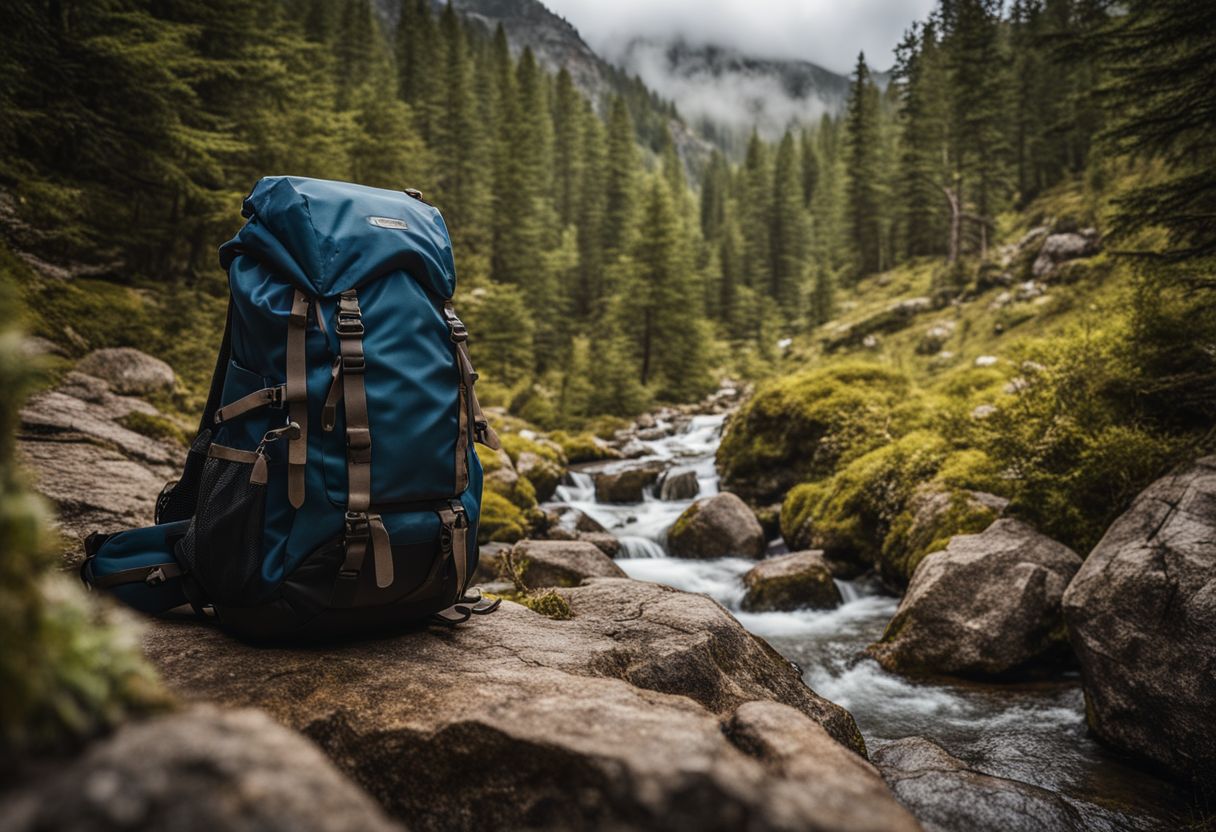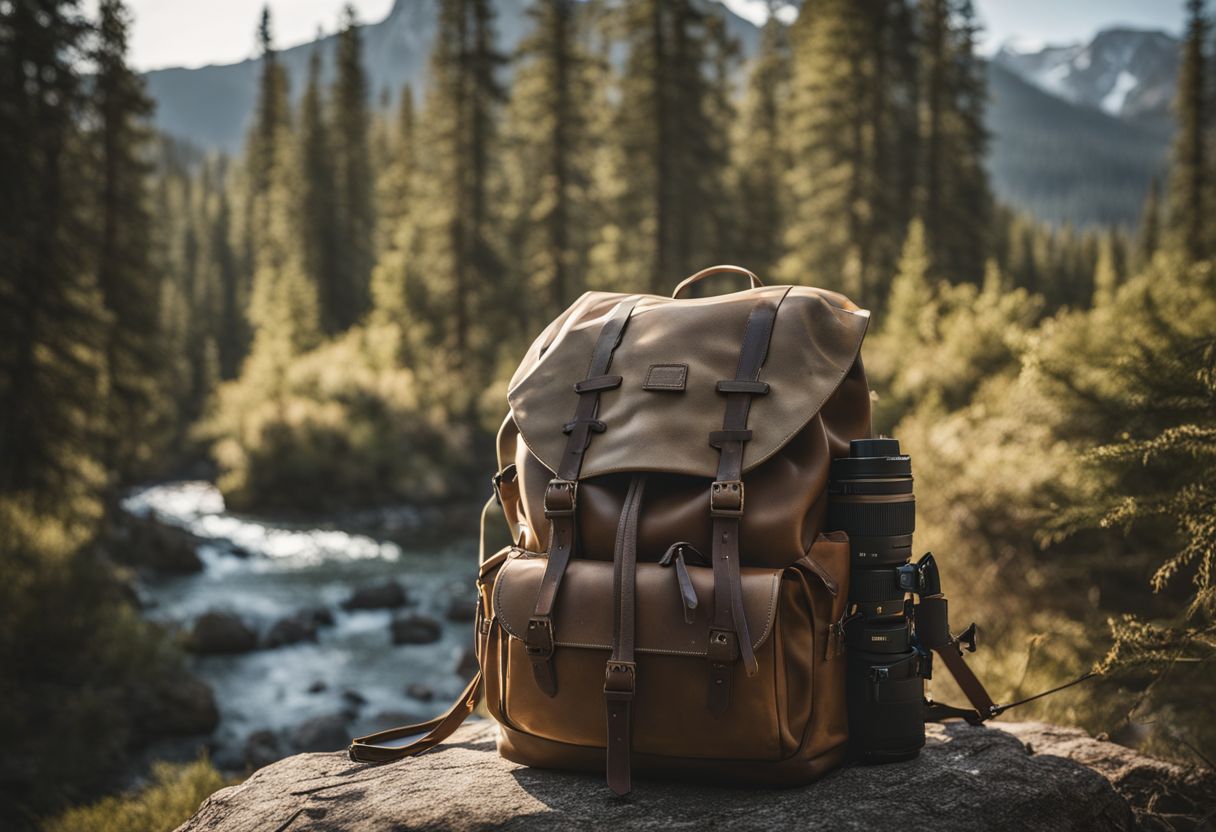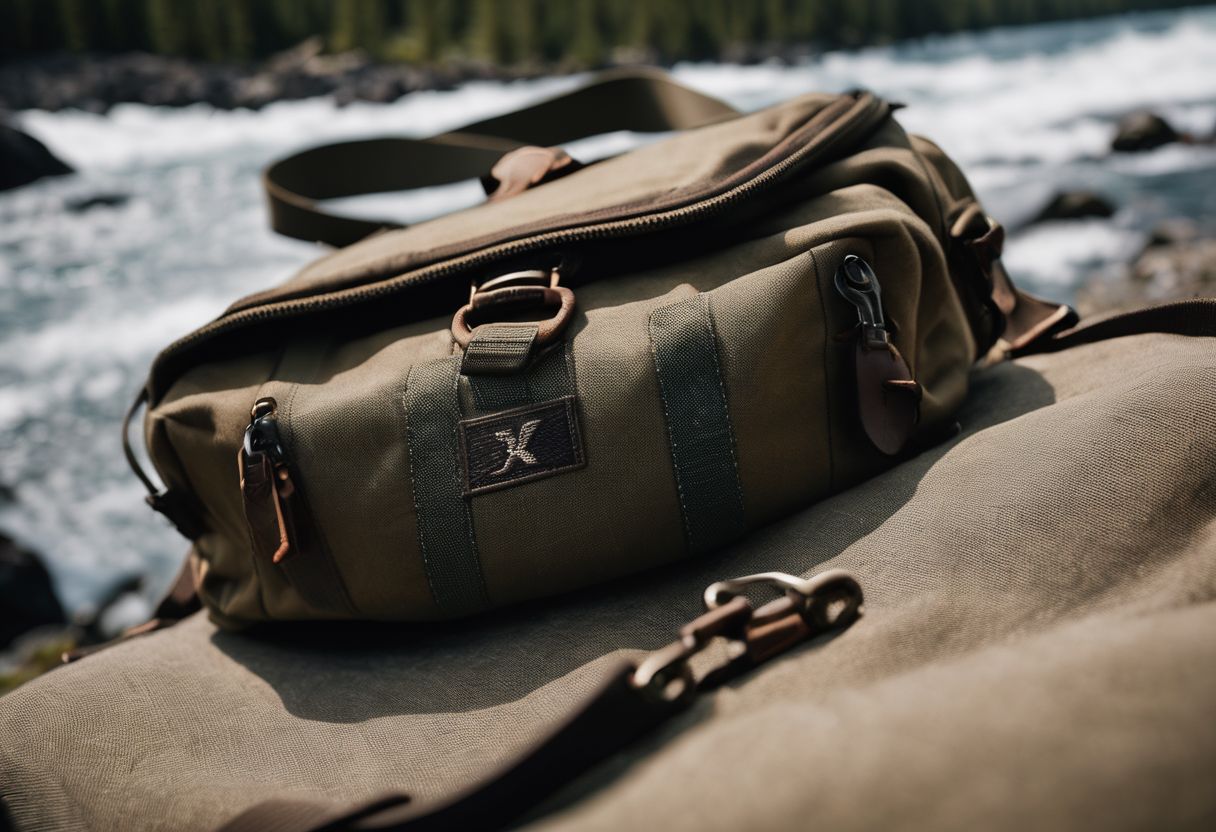The resilience of a rucksack hinges on more than just the fabric from which it’s crafted; each stitch plays a pivotal role in its longevity. As an expert with years of experience in textile engineering and garment construction, I’ve witnessed firsthand how meticulous stitching methods can drastically extend the life of any backpack.
The interplay between materials like ballistic nylon and precise sewing techniques is where durability truly lies.
Understanding that the number of stitches per inch (SPI) can serve as a backbone to your pack’s endurance—typically landing between 6-10 SPI—is crucial for those seeking reliability in their gear.
With this knowledge as our guide, we will delve into why stitching is not merely a detail but rather the cornerstone of ruck sack resilience. Ready to discover how? Let’s unravel the secrets behind durable backpacks together.
Key Takeaways
- Stitching is a crucial factor in determining the durability of rucksacks, as it holds all components together and withstands various conditions.
- Different types of stitching, such as single, double, X – box, overlock, and flatlock stitching, offer unique benefits for enhancing rucksack resilience.
- Choosing the right stitching method and thread material is essential for ensuring a durable backpack that can withstand the intended stress levels and usage. High-stitch counts may compromise fabric strength; hence a balance between stitch appearance and seam strength is vital.
The Role of Stitching in Backpack Durability

Quality stitching plays a crucial role in ensuring the durability and longevity of backpacks, as it holds all the components together under various conditions.
Types of Stitching Used in Backpack Construction
Stitches hold a backpack together. The way a backpack is sewn affects how long it will last.
- Single Stitching:
- This basic stitch is one line of thread.
- It’s quick and easy but not the strongest.
- If you open and close your backpack a lot, the zipper might break away from single stitching.
- Double Stitching:
- Two lines of threads go side by side.
- It gives more strength than single stitching.
- Good for parts of the backpack that carry weight.
- X-box Stitching:
- Looks like an X inside a box.
- Used to attach straps to the bag strongly.
- Can handle pulling without breaking.
- Multi-bar Track Stitching:
- Several rows of stitches make tracks.
- They add extra hold where straps meet the bag’s body.
- This helps your rucksack take more use without tearing apart.
- Overlock Stitching:
- Edges are sewn over to stop fraying.
- Uses multiple threads wrapped around the edge.
- Common in making clothes and bags to make them last longer.
- Flatlock Stitching:
- Stitches lay flat against the fabric.
- Good for places that rub against your skin, like shoulder straps.
- Makes inside seams smooth so they won’t bother you.
Importance of Quality Materials
Good materials make a backpack strong and last long. They help keep your stuff safe and make sure the bag is easy to use. Backpacks made of leather or rip-stop nylon are tough and don’t tear easily.
This means they can hold more things without breaking. The threads used in making the bags are also important. Strong threads like those found in body armor, such as ultra-high-molecular-weight polyethylene (UHMWPE), can stand up against lots of wear and tear.
Using high-quality fabrics and stitching means your backpack won’t fall apart quickly. It saves you money because you won’t have to buy a new one too soon. Also, it’s better for the planet because less material is wasted, and fewer bags end up thrown away.
If you choose a bag made from sturdy materials like dyneema or spectra, which are very strong fibers often used in technical gear like sail cloth or motorcycle jackets, you’re picking strength that lasts through many adventures!
Exploring Different Types of Stitching

Different types of stitching play a crucial role in the durability of rucksacks, with options such as single stitching, double stitching, overlock stitching, and flatlock stitching offering unique benefits for varying needs.
Single Stitching
Single stitching is a basic sewing method where one line of thread is used to join pieces of fabric. It’s common in many backpacks because it’s fast and easy with a sewing machine.
A single row of stitches can hold layers together well for daily use. But if the bag holds heavy items or gets rough treatment, single stitching might not be enough.
With hand-stitched bags, the work often lasts longer than machine stitching. This is because people can make sure each stitch goes through the right spots, making the seam strong. But putting too many stitches into an inch of fabric can weaken it.
Just like when you poke lots of holes close together in paper and it tears easier, too many stitches do that to fabric. Keeping fewer than 10 stitches per inch helps keep your backpack tough and ready for adventure.
Double Stitching
Double stitching is a method used to reinforce the strength and durability of backpacks. It involves sewing two parallel lines of stitching, which provides extra security and prevents the fabric from unraveling or tearing easily.
This technique is commonly applied in critical stress areas like zippers and straps, where the backpack experiences the most tension and wear. By doubling all stitching, including zipper attachment, double stitching significantly enhances the overall resilience of the backpack.
When using a double needle on a sewing machine, variations in stitching can be created based on factors such as foot type and stitch used. The twin stitching method offers superior reinforcement against wear and tear for backpacks that undergo heavy use or carry heavy loads, making it an essential consideration when choosing a durable rucksack.
Overlock Stitching
Overlock stitching is a durable and professional way to finish seams on garments and fabric items. It involves using a special foot with a pin to wrap the stitch around the raw edge of the fabric, creating a neat and secure finish.
This type of stitching is different from a zigzag stitch, providing added strength to the seam. Adjusting tension dials and using different colored threads can help achieve a balanced overlock stitch, making it versatile for various applications.
The use of this method ensures that the edges are neatly enclosed, preventing fraying or unraveling over time.
Flatlock Stitching
Flatlock stitching is a method of joining two pieces of fabric side by side without overlapping them. It creates a strong, flat seam with no seam allowance, making it ideal for reducing chafing in backpack construction.
Unlike overlock and cover stitching, the flatlock stitch lays flat against the fabric, enhancing durability. However, it’s essential to note that faux flatlock stitching lacks the same strength as authentic flatlock stitching.
When considering durability in rucksack construction, understanding the characteristics and benefits of flatlock stitching can guide you in selecting the appropriate sewing technique for long-lasting performance.
Choosing the Right Stitching for Your Backpack
Consider the factors that will impact the strength and durability of your backpack, such as thread count and type of stitching used. Find out how to make the best choice for your needs!
Factors to Consider
- The specific use and intended stress levels the backpack will endure, as this determines the most suitable stitching type for durability.
- The choice of materials used in the backpack’s construction, considering thicker yarns in fabric for higher abrasion resistance and factors like water repellent and UV degradation properties.
- Special features required in a backpack, such as compartments, zippers, and straps that need to withstand heavy loads or harsh conditions.
Comparing Strength and Durability
Understanding the nuances of stitching is key when assessing the strength and durability of a backpack. The materials used for threads, such as Kevlar, which is known for its exceptional strength, and the stitching techniques employed, directly influence the backpack’s longevity. Let’s delve into a comparison of stitching options and how they affect the overall durability of a rucksack.
| Stitching Type | Materials Used | Durability | Best Used For |
|---|---|---|---|
| Single Stitching | Standard threads | Less durable, risk of seam failure under stress | Lightweight, less intensive use |
| Double Stitching | Stronger threads like polyester | More durable, better load distribution | Everyday backpacks, moderate hiking |
| Overlock Stitching | Quality threads, potentially Kevlar | Very durable, prevents fraying edges | Heavy-duty use, tactical backpacks |
| Flatlock Stitching | Thick, durable threads | Strong, flat seams for comfort | High-endurance activities, travel bags |
Selecting the appropriate stitching and thread material is crucial for backpack durability and longevity. High-stitch counts may compromise fabric strength, hence a balance is essential. Leather backpacks typically feature sturdy construction with strong stitching, whereas materials like nylon, polyester, and ripstop enhance the backpack’s resilience. Always weigh the practical benefits of each stitching type against the intended use of the backpack to ensure optimal functionality and endurance.
Conclusion
In conclusion, understanding the impact of stitching on rucksack durability is crucial for choosing a reliable and long-lasting backpack. The number of stitches per inch directly affects a backpack’s strength and longevity.
By selecting the right stitching method and considering factors such as seam strength, stitch appearance, and material type, one can ensure a durable and resilient backpack that withstands the demands of outdoor adventures.
It’s essential to prioritize quality materials and appropriate stitching techniques to enhance the overall durability of a rucksack.
FAQs
1. Why is the type of stitching important for a rucksack’s strength?
The kind of stitches used, like cross-stitch, can make a rucksack stronger and keep it from tearing because they hold parts tightly together.
2. What materials are good for making tough rucksacks?
Tough rucksacks are often made from strong fabrics like ripstop nylon or ultra-high molecular weight polyethylene (UHMWPE), which are known to be durable.
3. Can sewing machines handle tough materials like polypropylene?
Yes, many sewing machines can work with tough synthetic materials such as polypropylene to create sturdy seams and hems in items like rucksacks.
4. What is so special about thermoplastic polymers in backpacks?
Thermoplastic polymers, such as thermoplastic polyurethane, are great for backpacks because they resist wear and tear and help keep things waterproof.
5. How do weaves affect the toughness of a backpack fabric?
The way fibers, like those in linen or muslin, weave together makes the fabric denser and more resistant to ripping—good weaves help backpacks last longer.
6. Is only fabric durability important for long-lasting rucksacks?
No! Along with durable textiles industry fabrics or technical fabrics including laminates that stand up against damage; the density of fibrous material – deniers -and how sewists use darning techniques also add to a Rucksack’s lifespan.

